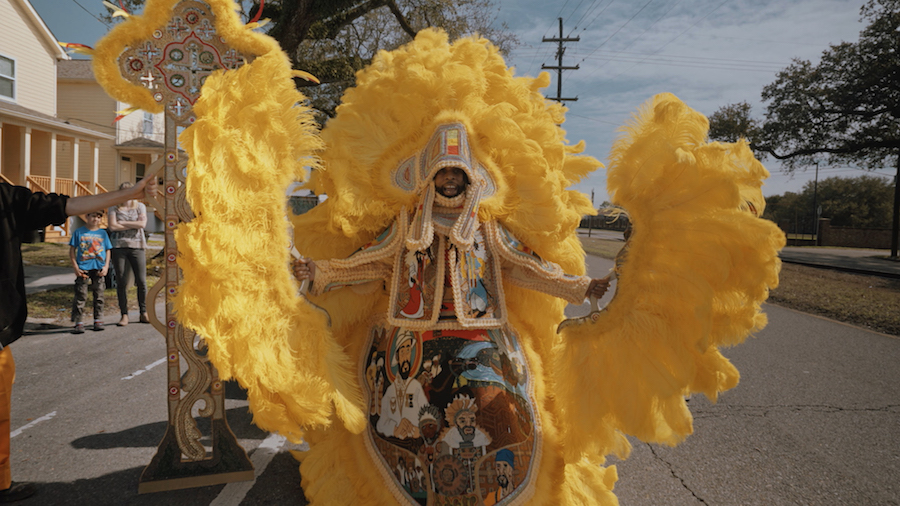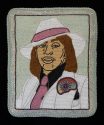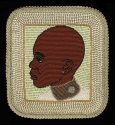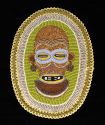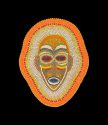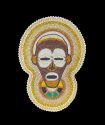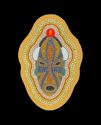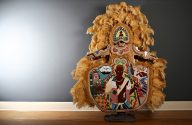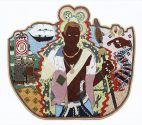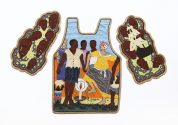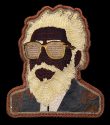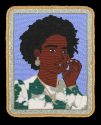Demond Melancon (b. 1978) works solely with a needle and thread to sew glass beads onto canvas. He began this practice in 1992 when he first became part of the Black Masking Culture of New Orleans, a culture whose roots are woven through more than two centuries of history. Big Chief Demond Melancon is well known for creating massive Suits as a Black Masker. His Suits are sculptural forms based on the size of his body which are composed of intricate, hand-sewn beadwork revealing a collective visual narrative. In 2017, Melancon pioneered an emerging contemporary art practice using the same beading techniques he’s been refining over the past 30 years in the Black Masking Culture.
Melancon’s work has been included in exhibitions at the Victoria & Albert Museum, Art Gallery of New South Wales, International African American Museum, African Diaspora Art Museum of Atlanta, Museum of Contemporary African Diasporan Art, African American Museum in Philadelphia, Halsey Institute of Contemporary Art, Kalamazoo Institute of Arts, Haus der Welt der Kulturen (Berlin), London Design Festival, Biennale of Sydney, Art Miami, Arrival Art Fair, and EXPO Chicago. His work is included in the collections of the Gibbes Museum of Art, International African American Museum, Toledo Museum of Art, Birmingham Museum of Art, and the LSU Museum of Art. In a span of two years, Demond Melancon was honored with the Joan Mitchell Foundation Fellowship in 2023 and the Gibbes Museum and Society’s 1858 Prize for Contemporary Southern Art in 2024.
As a self-taught artist, Melancon has been heavily influenced by the teachings of Kerry James Marshall. Often reflecting untold stories from bygone pasts, many of his works honor Black subjects historically excluded from the artistic canon while confronting stereotypical representations of Black identity. The potency of Melancon’s work is reinforced by his deep interest in exploring the possibilities of visual storytelling and redefining the traditions of portraiture. Demond Melancon is one of the few artists to pioneer the use of glass beads as an accepted medium in the larger contemporary arts sector. By reconsidering predominant narratives, Melancon deliberately repositions historically overlooked subjects and reimagines the institutional portrayal of the Black subject.
